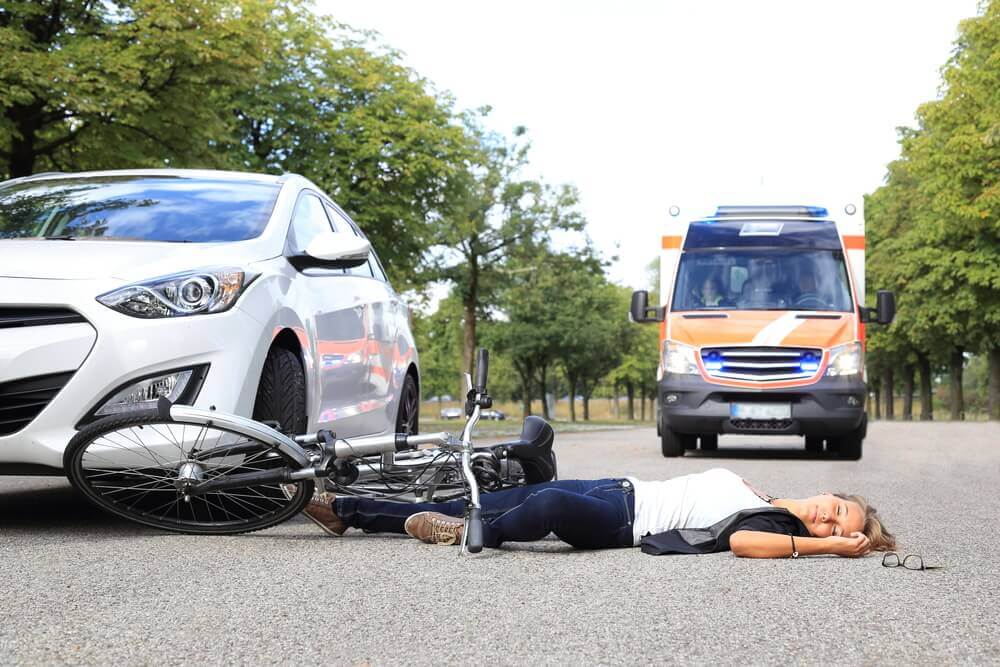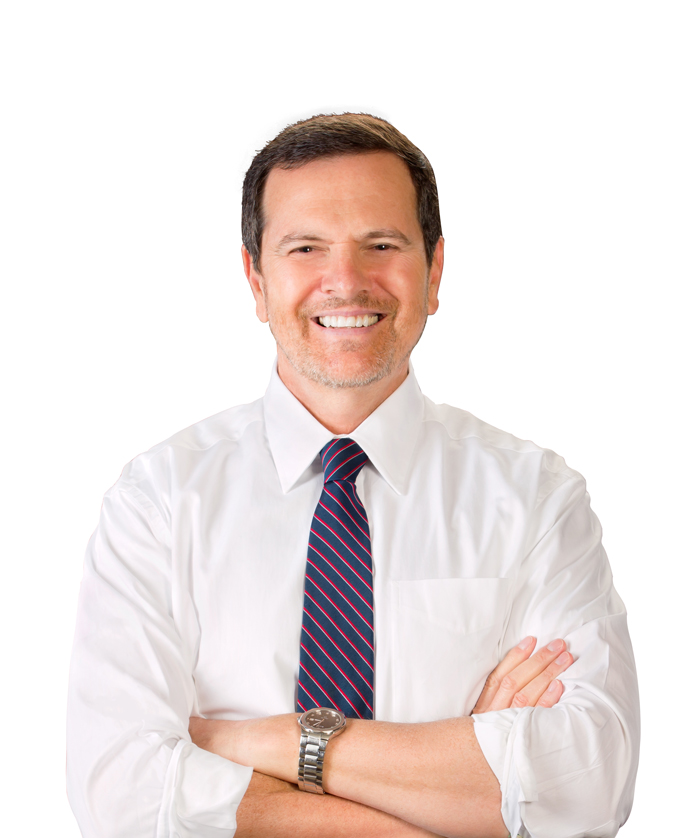Steven A. Bagen | June 7, 2023 | Personal Injury

Riding a bicycle offers an easy, eco-friendly, and convenient way to get around, especially in areas with high walkability scores. Unfortunately, bicycles can also pose a considerable danger to their riders since drivers that share the road with them may fail to exercise adequate precautions.
Some bicycle accidents occur more frequently than others due to common driver errors, including everything from ignoring the rules of the road to failing to pay proper attention to cyclists around them. In such cases, it may be necessary to consult with a bicycle accident lawyer to explore legal options and seek compensation for injuries sustained.
Common Types of Bicycle Accidents
These common bicycle accident types frequently occur due to driver error, distraction, or simply failing to share the road safely with a cyclist.
1. Crossing a Vehicle’s Path
Cyclists often work hard to keep the momentum and may have difficulty stopping quickly. Unfortunately, cyclists may face considerable danger when crossing roadways from vehicles that may not stop to allow them to cross safely.
Even when cyclists have the right of way, drivers may not come to a full stop before proceeding through an intersection or crosswalk. As a result, cyclists may suffer severe injuries due to the high rates of speed often involved in those accidents.
2. Right Hook Accidents
A right hook accident occurs when a vehicle accidentally turns right into a cyclist traveling beside the vehicle. Typically, cyclists will ride on the far right side of the road, either in a bike lane or a traffic lane. Vehicles, when passing them, will pass on their left. That places the cyclist on the driver’s right side, on which the driver may have poorer overall visibility.
Some vehicles may have blind spots large enough to lose a small car, much less a cyclist. When the driver attempts to turn right after passing the cyclist, if the driver does not locate the cyclist ahead of time, they can end up causing a right hook collision, striking the rider on the left side.
3. Vehicles Pulling Past Cyclists
Cyclists on the road, rather than in assigned bike lanes, may be difficult to see. Furthermore, some drivers may attempt to aggressively pass the cyclist rather than allowing adequate room and time to get past the cyclist safely.
Vehicle drivers struggle with the slowed flow of traffic and the fact that cyclists can take up a full lane of traffic, just like other drivers on the road. The vehicle pulling past the cyclist can cause a sideswipe collision or hit the cyclist directly.
4. Right Cross Collisions
Cyclists have the same right as motor vehicle drivers to use the road and have the right to take up a full lane of traffic. Unfortunately, cyclists may fit a very different visual profile from passenger vehicles, which most drivers look for when they examine the road before pulling out.
As the driver pulls out in the road, not allowing the cyclist to pass safely, the driver may sideswipe the cyclist on the right side. If the vehicle pulls out in front of the cyclist, making it impossible for the cyclist to stop in time, the bicycle can hit the vehicle on its left side. The cyclist can suffer severe injuries due to the inability to stop, especially if the cyclist flips over the handlebars during the accident.
5. Left Cross Collisions
If a cyclist travels with the flow of traffic or according to the rules of the road, and a driver pulls out in front of a cyclist and turns left, it represents a left cross collision. Left cross collisions can cause the cyclist to roll directly into the vehicle, increasing the risk that the cyclist will flip over the handlebars.
Due to the slower rate of left turns, cyclists may have more time to stop than if the driver pulls out in front of them with the intent to turn right. However, some drivers may rush into the road without ever noticing the cyclist’s presence, raising the risk of an accident.
6. Rear-End Collisions
Rear-end collisions with bicycles occur when drivers strike cyclists from behind. Rear-end collisions may occur because of driver distraction or because the driver gets frustrated and tailgates the cyclist.
Unfortunately, tailgating does not push cyclists to travel faster but increases the risk of a dangerous accident. A rear-end collision may also occur because a driver does not stop at a red light or stop sign when a cyclist does or when a cyclist needs to pause in traffic.
7. Dooring Accidents
A dooring accident occurs when a driver or passenger in a parked car opens the door to the cyclist. Cyclists may not have adequate time to stop before getting struck by the door.
Depending on the cyclist’s rate of speed and how hard the motorist opens the door, dooring accidents can cause the cyclist to fall from the bicycle and suffer severe injury. Dooring accidents occur more frequently in urban areas, where cyclists may need to ride past more parked lines of cars.
Why Do Bicycle Accidents Occur?
Cyclists face several potential hazards when they ride on the road. Accidents can occur for several reasons, many of which occur due to driver error.
1. Driver Distraction
When drivers fail to pay adequate attention on the road, it can pose a danger to cyclists. Bicycles do not fit the same visual profile as larger passenger vehicles, which most drivers look for when turning into traffic.
As a result, distracted drivers may not realize that they share the road with a bicycle. A distracted driver may also look down or away from the road at the wrong moment, increasing the odds of striking a cyclist from behind or the side.
Driver distraction often occurs due to cell phone use behind the wheel. However, distracted drivers can also struggle with a host of other things that take their attention, hands, or eyes away from the task of driving, including eating or drinking behind the wheel, changing the radio station or air controls in the car, or even simply conversing with a passenger. Even seemingly minor distractions can take the driver’s attention from the road at a critical moment, leading to a truck collision.
2. Poor Visibility
Roads with poor visibility make it difficult for drivers to see that they share the road with cyclists. For example, roads with significant obstruction from bushes and greenery, signs, or construction may make it much more difficult for drivers to see the presence of cyclists on the road.
Poor visibility can also occur during heavy rainfall, making it more difficult for drivers to see around them. While cyclists ride less often in the rain, they may still need to finish a ride if an unexpected rainstorm crops up.
3. Poor Cycling Infrastructure
Cycling infrastructure makes it easier and safer for cyclists to get around cities, whether they ride for business or pleasure.
Cycling infrastructure may include:
- Separate lanes for cyclists
- Dividers that prevent vehicles from getting into bike lanes
- Bike paths and trails designed just for cyclists
- Slowed speeds in and near bike lanes
These infrastructure improvements can make a huge difference in overall cyclist safety. However, many cities still do not have those vital improvements. As a result, cyclists may have a harder time getting around. When drivers must directly share the road with cyclists, cyclists have a higher risk of ending up in a devastating accident.
4. Failure to Follow the Rules of the Road
Drivers who fail to follow the rules of the road not only pose a greater danger to the occupants of other vehicles that share the road with them, they may pose a much more severe danger to cyclists.
Entering Bike Lanes
Bike lanes allow cyclists a safe way to get around the city while utilizing convenient roadways. Unfortunately, some drivers will use bike lanes as extra space for their vehicles. When drivers enter those bike lanes, they can end up on top of a cyclist.
Speeding
High rates of speed can prove deadly in any type of collision. For cyclists, they can prove even more dangerous. Speeding means that the driver must have much faster reaction times to avoid the risk of a collision, which raises the risk of an accident. It also increases the force behind the accident. Since cyclists have relatively little protection from the road, they may have a much higher risk of suffering severe injuries than vehicle occupants.
Ignoring Signs and Traffic Signals
Cyclists, like drivers, must pay attention to all signs and traffic signals as they move through traffic. They rely on those signals to tell them how traffic flows and when they can safely complete maneuvers on the road, including turning, crossing an intersection, or moving off a bike path onto the road.
Sometimes, however, drivers may ignore those traffic signs and signals. When a driver pulls out unexpectedly, against the flow of traffic as described by those signs, a cyclist may have a hard time avoiding the vehicle.
Failure to Yield
Many drivers struggle to safely share the road with cyclists. They assume their larger vehicles give them the right of way and feel the smaller bicycle gets in the way. As a result, drivers may try to push out into the road in front of or on top of cyclists rather than safely sharing space.
Instead of yielding to a bicycle with the right of way, those drivers may push to get ahead of them because they do not want to end up slowed down behind a bicycle. As a result, those drivers may cause serious injuries.
5. Road Rage/Aggressive Driving
Some drivers quickly grow frustrated by any delay in getting to their destination. They get in a hurry, or they feel that a cyclist in the way simply slows down the flow of traffic.
As a result, they may, for example:
- Drive aggressively around the cyclist.
- Tailgating to push the cyclist to go faster.
- Driving too close to the cyclist.
- Trying to get past the cyclist without adequate room.
A raging driver may even end up causing deliberate injury to a cyclist by pushing the cyclist off the road. Road rage can cause severe injuries to cyclists since they have little protection against the raging driver’s vehicle and may struggle to get out of the way.
6. Unsafe Lane Changes
Drivers need to look carefully any time they need to change lanes. They need to pay attention to everything around them and ensure they have adequate room to pull out, especially when sharing the road with a cyclist.

Unfortunately, some drivers will not take the time to change lanes safely. They may swerve through traffic abruptly or ignore the presence of cyclists in the lane beside them. Unsafe lane changes significantly increase the risk that a driver will not even see a cyclist, which can mean severe injuries.
Contact a Lawyer After Your Bicycle Accident
Bicycle accident claims can turn complicated. Not only do you need to carefully consider who bears liability for the accident and how you can establish proof of that driver’s negligent behavior, but you may also need to establish the damages you sustained in the accident, including your injuries, medical bills, and suffering.
If you suffered injuries in a bicycle accident, working with an accident injury law firm in Gainesville can make it easier to deal with the insurance company and fight for the compensation you deserve. Contact an attorney as soon after your accident as possible to discuss your right to compensation or how to move forward with a bicycle accident claim.
